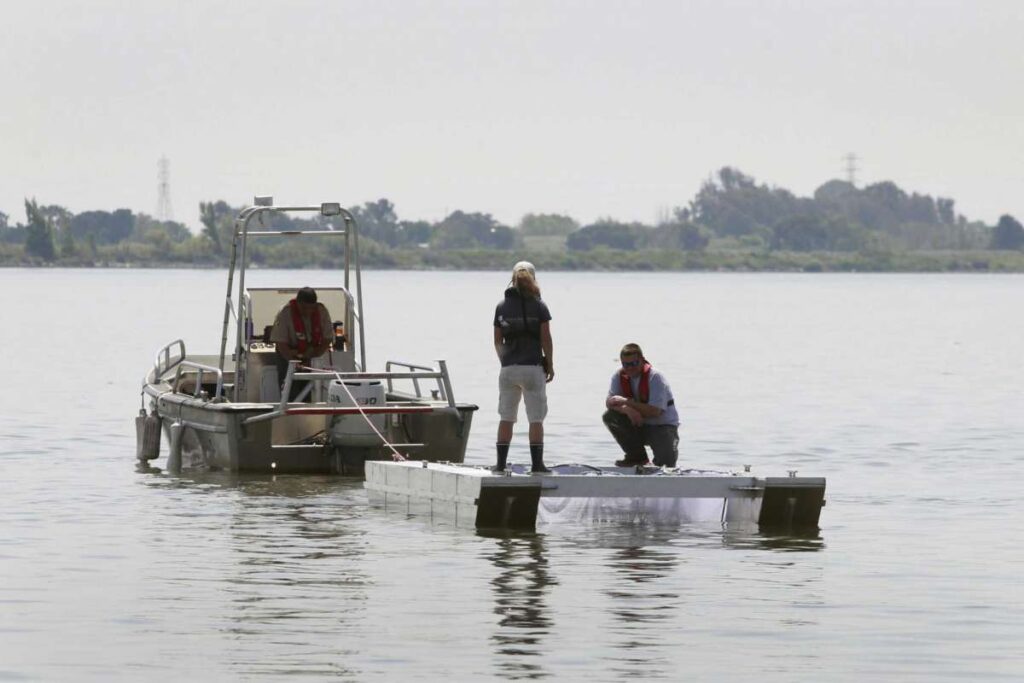By Kurtis Alexander Via sfchronicle.com

Millions of young salmon raised at fish hatcheries in the Central Valley will be trucked to San Francisco Bay and other coastal sites for release, because the rivers they’d normally travel to get to the ocean are drying up, state and federal officials said Wednesday.

The ambitious trucking program, a response to the state’s escalating drought, is intended to maximize survival of the hatchery fish that prop up California’s fall-run of chinook — the mainstay of the state’s commercial and recreational salmon industries.
Officials in charge of the five major inland hatcheries that rear the fish say convoys of tanker trucks are the only way to ensure the 3-inch smolts make it to sea. The rivers are either too low or too warm for the fish — or both.
“Trucking young salmon to downstream release sites has proven to be one of the best ways to increase survival to the ocean during dry conditions,” said Jason Julienne, north central region hatchery supervisor for the California Department of Fish and Wildlife.
The chinook normally begin their lives upriver then swim to the Pacific, where they remain for three years before returning to their birthplace to spawn. A crash in just one year’s juvenile numbers can have lasting effects on the total salmon population.
The situation so far is not nearly as severe as it was during last decade’s drought, when the bulk of hatchery fish were transported to sea via truck. This year, hatchery managers were able to release the majority of their juveniles upriver before they deemed river conditions too dicey to proceed.
State officials estimate that 16.8 million fish will have to be trucked from the four state-run hatcheries through the beginning of June, about 20% more than in a normal year. Some trucking is done every year to increase survival probabilities. The state hatcheries are located along the Feather, American, Mokelumne and Merced rivers.
Federal officials, who run the Coleman National Fish Hatchery along a tributary of the Sacramento River in Shasta County, don’t normally truck any salmon, but this year will send about 950,000 fish. It’s less than 10% of their total.
The risk when moving fish to a different release point is that they won’t find their way back to their spawning grounds.
“We perceived a prospective drought ahead of time and worked to prepare so we didn’t have to truck (many) fish,” said Bob Clarke, fisheries program supervisor for the U.S. Fish and Wildlife Service’s Pacific Southwest Region. “We were out in front.”
The state began transporting fish to coastal sites last week, and federal officials plan to join them starting Monday, when smolts are scheduled to be trucked to Point San Quentin in Marin County for release.
John McManus, president of the Golden State Salmon Association, which advocates for fishers, said he appreciates the extra effort to save the fall-run chinook amid the drought. However, he says the underlying problem for salmon is that state and federal water officials have allowed too much water to be pulled from rivers and creeks in the first place.
“These river conditions are made worse by decisions that put salmon last,” he said.
Kurtis Alexander is a San Francisco Chronicle staff writer. Email: kalexander@sfchronicle.com Twitter: @kurtisalexander
